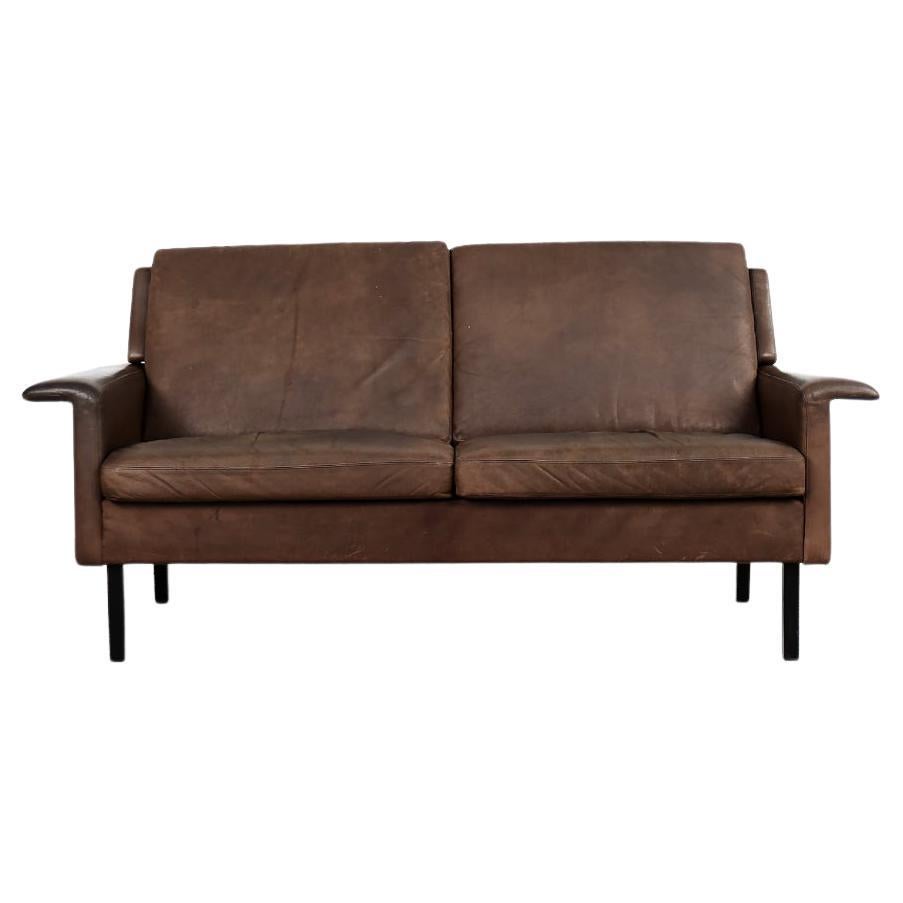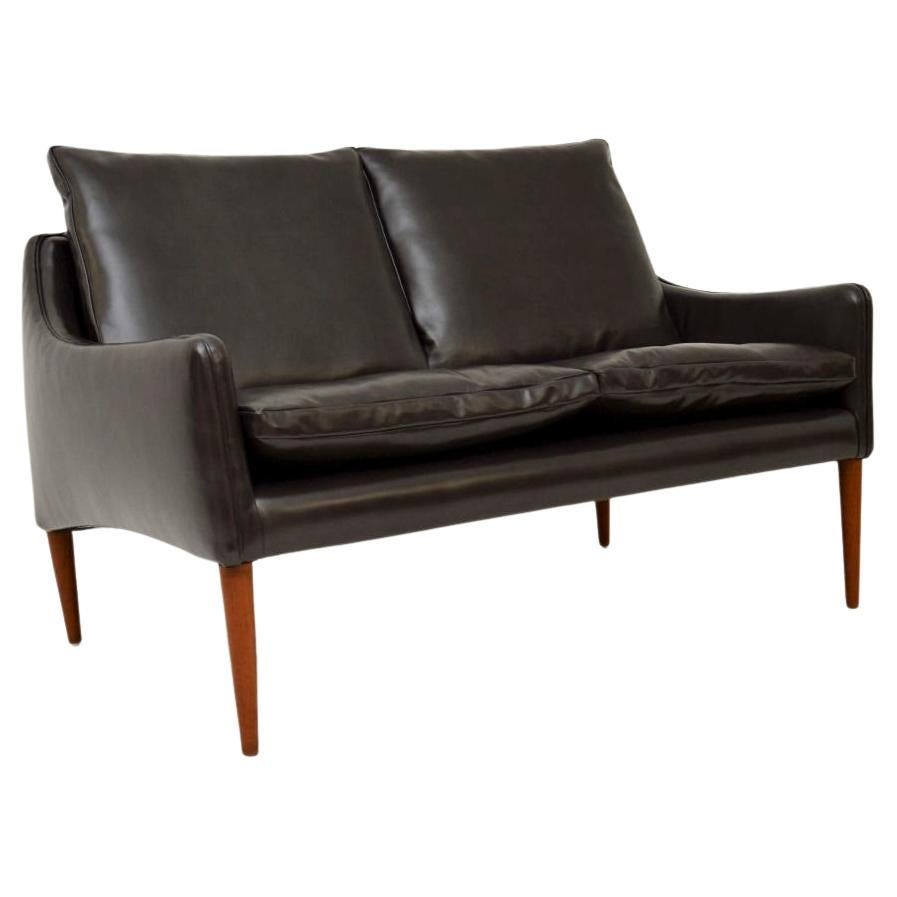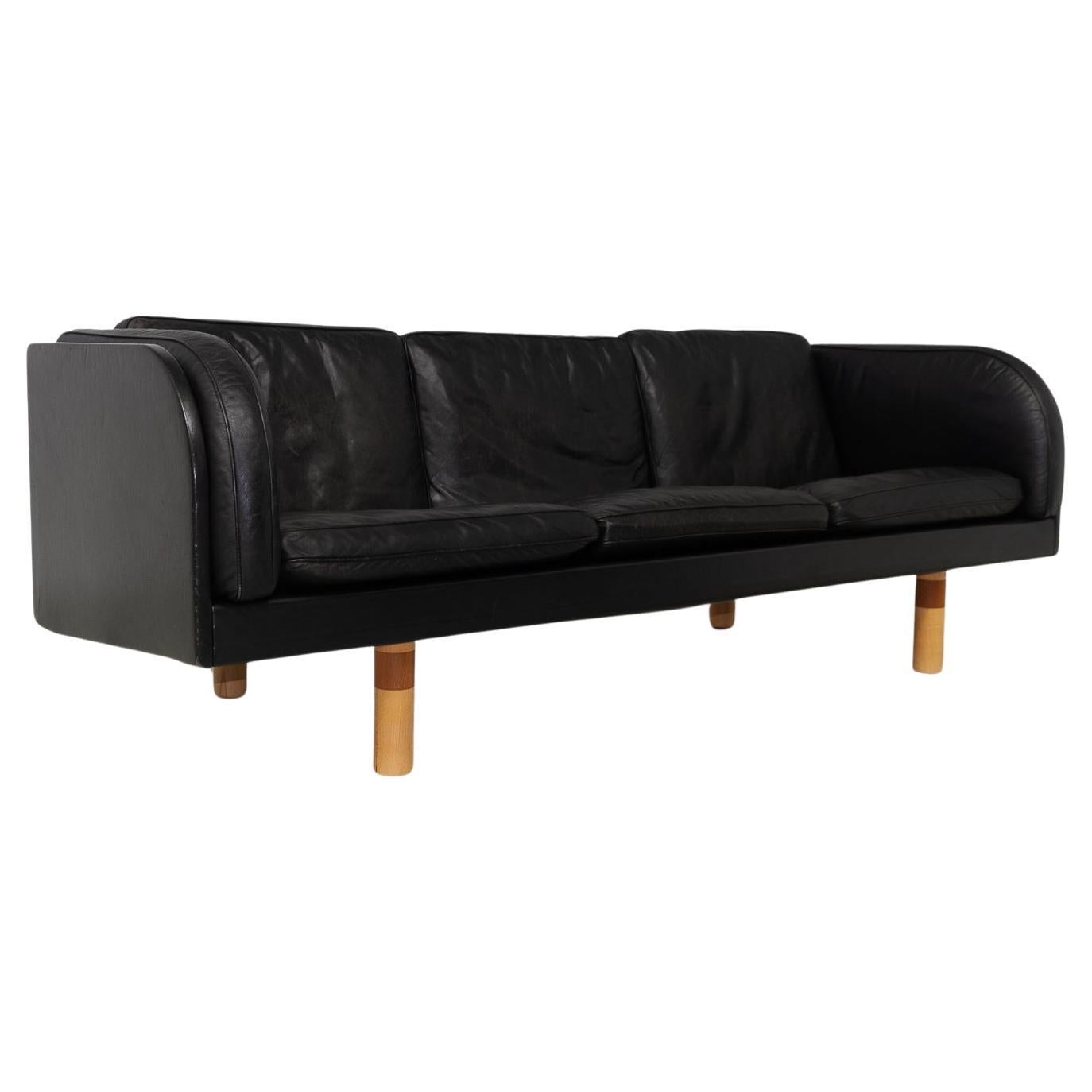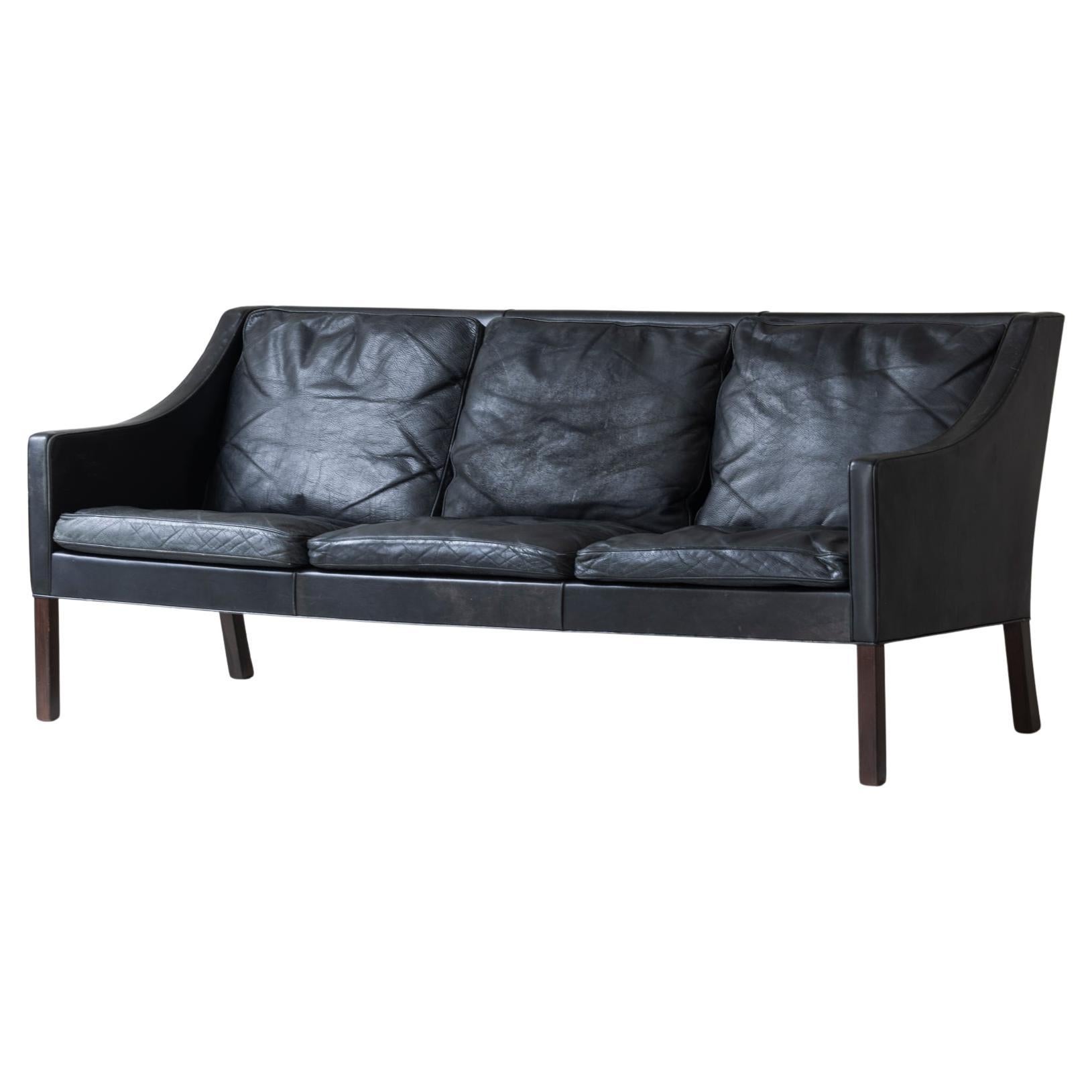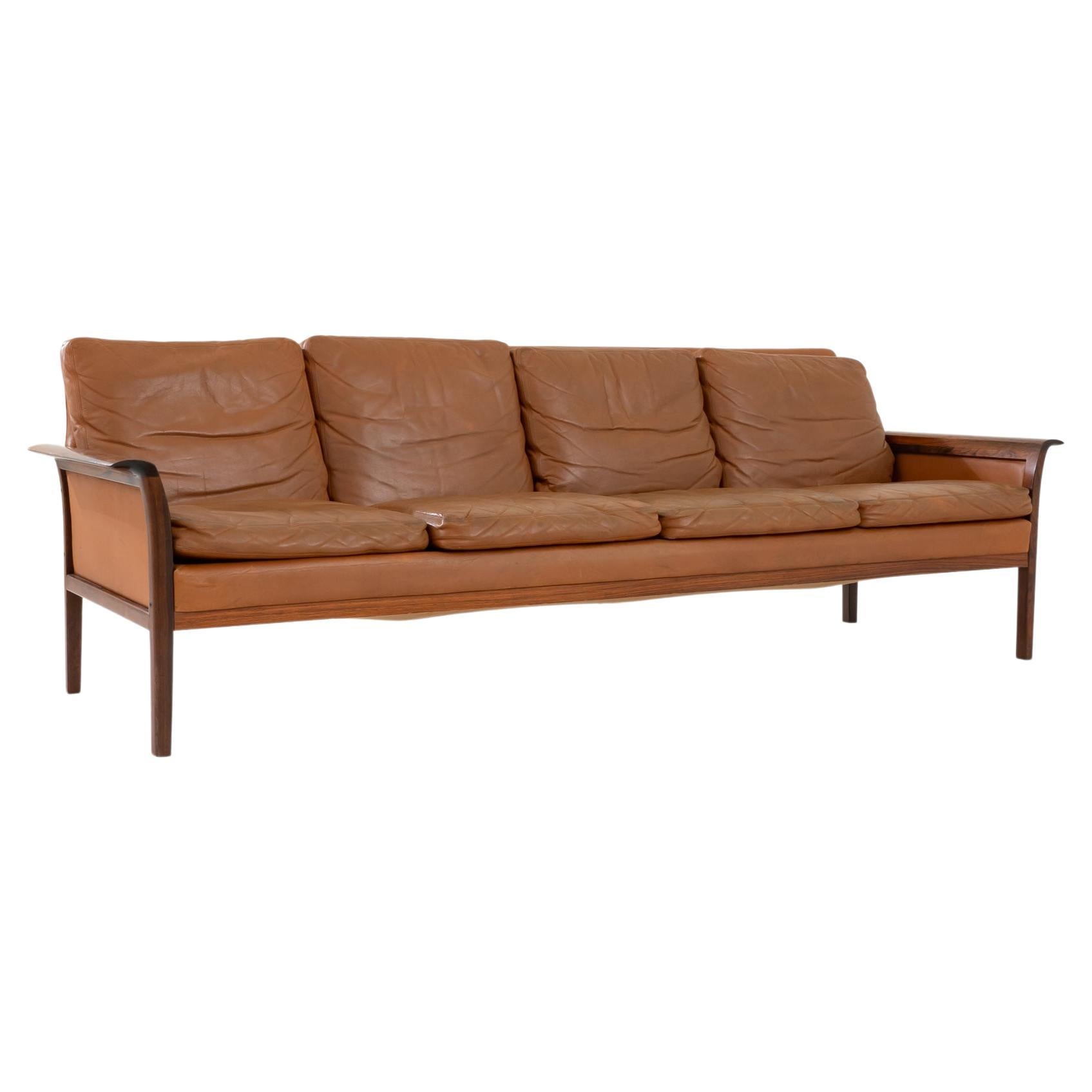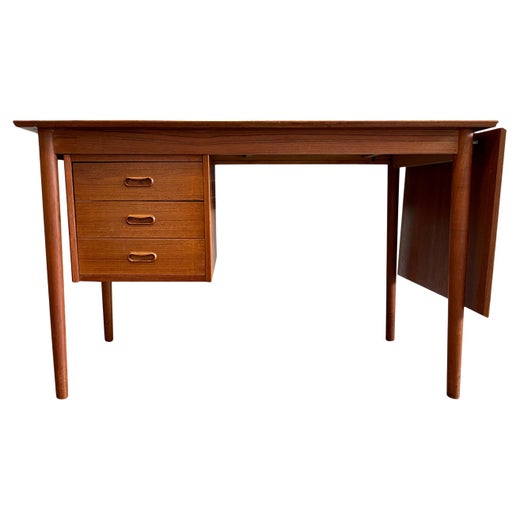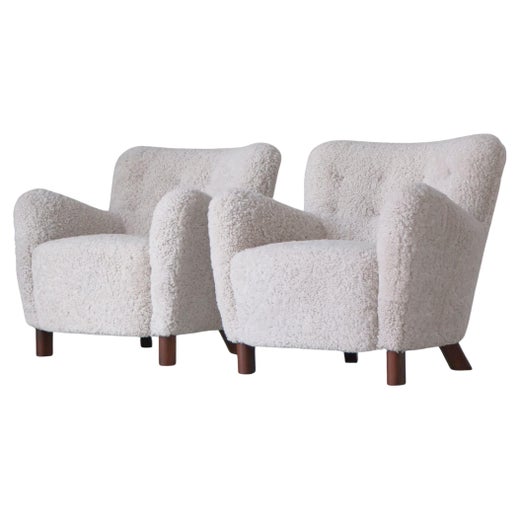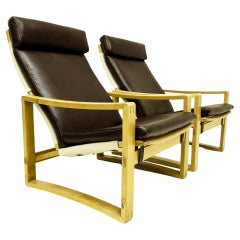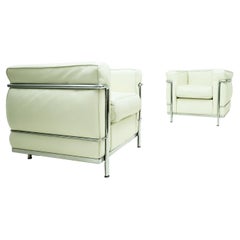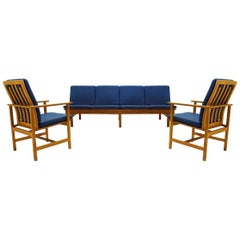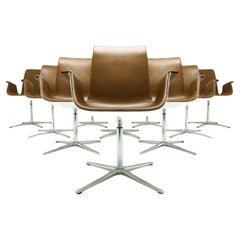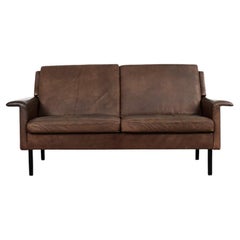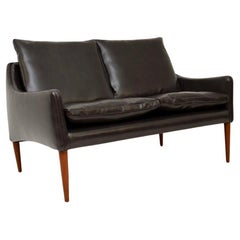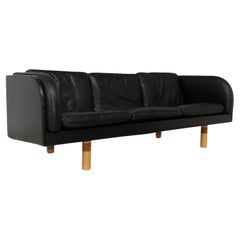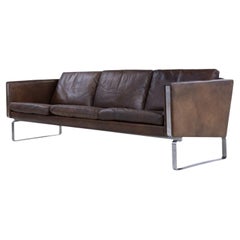Danish Mid Century model 3330 Arne Vodder 3 seater leather sofa for Fritz Hansen
About the Item
- Creator:Arne Vodder (Designer),Fritz Hansen (Manufacturer)
- Dimensions:Height: 31.5 in (80 cm)Width: 82.68 in (210 cm)Depth: 31.5 in (80 cm)Seat Height: 17.33 in (44 cm)
- Style:Mid-Century Modern (Of the Period)
- Materials and Techniques:
- Place of Origin:
- Period:
- Date of Manufacture:1960s
- Condition:Reupholstered. Wear consistent with age and use.
- Seller Location:Highclere, GB
- Reference Number:Seller: AV S31stDibs: LU4278240716672
Arne Vodder
Along with Vernor Panton, cabinetmaker and architect Arne Vodder was a leading light of what might be called the “second generation” of forward-thinking 20th-century Danish furniture designers — those who, following in the footsteps of Hans Wegner, Arne Jacobsen, Finn Juhl and others, first applied the skills, traditions and philosophical tenets of Scandinavian craftsmanship to a modern furniture idiom.
Vodder was a graduate student in architecture trained by Juhl, a pioneer of furniture design credited with igniting the Scandinavian modernist movement that swept like wildfire across the United States in the postwar era. Vodder made his mark in the 1960s, when modern design had gained wide acceptance, particularly in the business world. Accordingly, many of Vodder's chairs, created for manufacturers such as France & Søn, Fritz Hansen and Sibast, are quiet in form — projecting an air of sturdiness and strength, rather than avant-garde styling.
Vodder’s aesthetic flair is very pronounced in his vintage cabinets and storage pieces — sideboards, bookcases, credenzas and buffets. In such pieces, the designer liked to play with asymmetry.
Vodder’s bookcases often have a seemingly random array of variously sized shelves and nooks. A typical Vodder sideboard of the mid-century period — his classic Model 29 case piece is known to collectors — might have four sections, each different in purpose and look: an open stack of vertical shelves, and other cupboards covered with sliding panels in contrasting colored laminates and wood veneers.
As you will see from the works on 1stDibs, Vodder had a sense of what kind of design was appropriate for which space: sobriety in the boardroom; playfulness at home.
Find vintage Arne Vodder furniture for sale on 1stDibs.
Fritz Hansen
When the Copenhagen-based furniture maker Fritz Hansen opened for business more than 140 years ago, the company — which today styles itself The Republic of Fritz Hansen — adhered to the traditional, time-honored Danish values of craftsmanship in woodworking and joinery. Yet thanks to the postwar innovations of Arne Jacobsen and others, Fritz Hansen would become the country’s leader in Scandinavian modern design using new, forward-looking materials and methods.
Fritz Hansen started his company in 1872, specializing in the manufacture of small furniture parts. In 1915, the firm became the first in Denmark to make chairs using steam-bent wood (a technique most familiar from birch used in the ubiquitous café chairs by Austrian maker Thonet). At the time, Fritz Hansen was best known for seating that featured curved legs and curlicue splats and referenced 18th-century Chippendale designs.
In the next few decades, the company promoted simple, plain chairs with slatted backs and cane or rush seats designed by such proto-modernist masters as Kaare Klint and Søren Hansen. Still, the most aesthetically striking piece Fritz Hansen produced in the first half of the 20th century was arguably the China chair of 1944 by Hans Wegner — and that piece, with its yoke-shaped bentwood back- and armrest, was based on seating manufactured in China during the Ming dynasty. (Wegner was moved by portraits he’d seen of Danish merchants in the Chinese chairs.)
Everything changed in 1952 with Arne Jacobsen’s Ant chair. The collaboration between the architect and Fritz Hansen officially originated in 1934 — that year, Jacobsen created his inaugural piece for the manufacturer, the solid beechwood Bellevue chair for a restaurant commission. The Ant chair, however, was the breakthrough.
With assistance from his then-apprentice Verner Panton, Jacobsen designed the Ant chair for the cafeteria of a Danish healthcare company called Novo Nordisk. The chair was composed of a seat and backrest formed from a single piece of molded plywood attached, in its original iteration, to three tubular metal legs. Its silhouette suggests the shape of the insect’s body, and the lightweight, stackable chair and its biomorphic form became an international hit.
Jacobsen followed with more plywood successes, such as the Grand Prix chair of 1957. The following year he designed the SAS Royal Hotel in Copenhagen and its furnishings, including the Egg chair and the Swan chair. Those two upholstered pieces, with their lush, organic frames made of fiberglass-reinforced polyurethane, have become the two chairs most emblematic of mid-20th-century cool. Moreover, the Egg and Swan led Fritz Hansen to fully embrace new man-made materials, like foam, plastic and steel wire used to realize the avant-garde creations of later generations of designers with whom the firm collaborated, such as Piet Hein, Jørn Utzon (the architect of the Sydney Opera House) and Verner Panton. If the Fritz Hansen of 1872 would not now recognize his company, today’s connoisseurs certainly do.
Find a collection of vintage Fritz Hansen tables, lounge chairs, sofas and other furniture on 1stDibs.
- ShippingRetrieving quote...Shipping from: Highclere, United Kingdom
- Return Policy
More From This Seller
View AllMid-20th Century Danish Mid-Century Modern Lounge Chairs
Leather, Canvas, Beech
Late 20th Century Italian Bauhaus Lounge Chairs
Chrome
Vintage 1950s Danish Mid-Century Modern Living Room Sets
Fabric, Oak
1990s German Mid-Century Modern Dining Room Chairs
Aluminum
Vintage 1970s Norwegian Mid-Century Modern Lounge Chairs
Chrome
Vintage 1960s German Mid-Century Modern Lounge Chairs
Aluminum
You May Also Like
Vintage 1960s Danish Mid-Century Modern Sofas
Metal
Vintage 1960s Danish Mid-Century Modern Sofas
Leather, Teak
Vintage 1970s Danish Scandinavian Modern Sofas
Leather
Mid-20th Century Danish Mid-Century Modern Sofas
Steel
Vintage 1960s Danish Scandinavian Modern Sofas
Leather
Vintage 1960s Danish Mid-Century Modern Sofas
Leather, Wood
